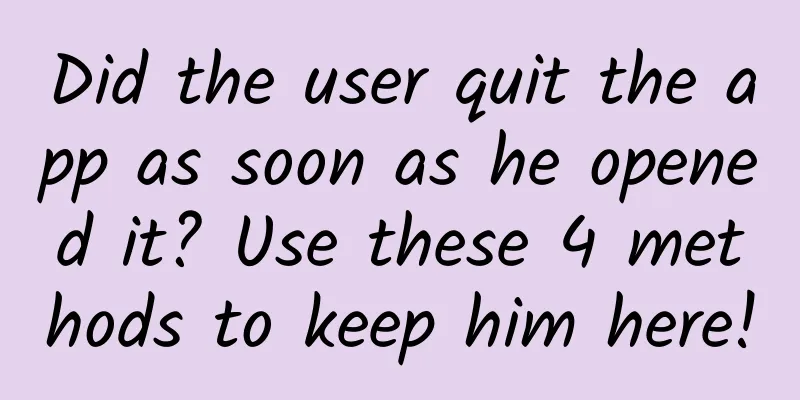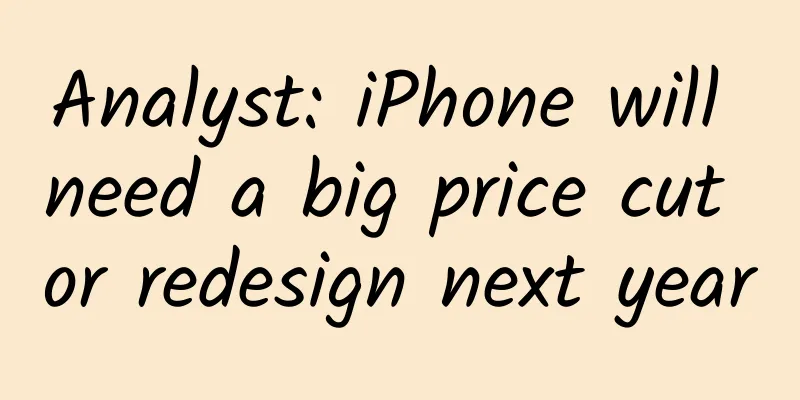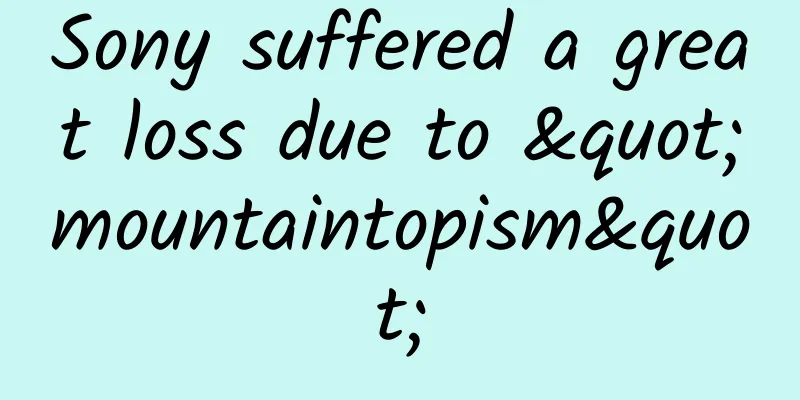Did the user quit the app as soon as he opened it? Use these 4 methods to keep him here!

|
How can we prevent users from interrupting operations during the core process and avoid loss? Below, the author will share with you four methods he has tested when optimizing actual solutions. One of the tasks I often do in my actual work is to optimize the core processes of the product. The purpose is to retain as many users as possible who enter the mini program and make them our effective users. In order to make it easier for everyone to understand the following content, I need to explain the demand background first:
However, these new users are not our effective users, because some of them may just leave after reading the business cards they received, without saving them, nor creating their own business cards. They will not use our products to exchange business cards with others in the future, so these people are not our effective users. Valid user-defined: In this product, you create your own electronic business card. The ultimate goal of a product may be to generate real profits, but before that, a larger number of effective users must be its core goal. Therefore, we often optimize and test the processes of major growth scenarios, hoping to find a design solution with a high enough conversion rate. Our goal: a larger number of core users. Optimization link: Improve the conversion rate from "new users" to "effective users". So, our problem now is very clear, that is, how to prevent users from interrupting operations in the core process and causing loss? The following are several methods that I have tested when optimizing actual solutions. Use the information that the user wants to obtain to perform forced operations In this design, users can only see the other party's full information after saving the business card, otherwise they can only see partial information. The original intention is to make users save business cards by making compulsory operations using the information they want to obtain, thereby improving the conversion rate of the first step of the entire core process. Similar designs are common in content-based products, such as the 2018 version of Baidu Tieba. When we open a post to view it, the content of the first page can be viewed at will, but if we want to continue to view the second page, we must log in to view it. When viewing former employees' comments about a company on Kanzhun.com, one must also log in and post a valid comment before continuing to view hidden information. There are also many products that have different rules set to unlock more functions, which is essentially a design of "improving product data by requiring users to perform mandatory operations on the basis of free use." Of course, forcing users to perform operations will have many advantages and disadvantages. This article only considers it from the perspective of "preventing core process interruptions." Provide a button to continue the process directly in the prompt pop-up window instead of interrupting the process This method may be more practical for students who have just entered the industry. Due to some restrictions in the product rules, we often use various pop-up boxes to prompt users. When users do not meet a certain condition and cannot continue the process, we directly provide the user with an entry to complete the unmet condition at this time, rather than asking users to manually close the prompt window and then find the entry by themselves. When users search on their own, various problems may arise, such as their attention being distracted by other elements, or they may not be able to find the entrance, resulting in loss. For example: In WeChat, if we use the scan code payment function without setting a payment password, a prompt box will be given. In the prompt box, we can directly click the "Go to set payment password" button to complete the unmet conditions, instead of closing the prompt and then clicking "My-Payment-More-Set payment password" to enter this link. Similarly, if we don’t want users to complete certain operations, such as uninstalling software on their computers, we can also prevent users from doing so by hiding it at the next level/unselecting it by default/misleading it visually, etc. I would never use software designed like this, but I have to say that some users behave completely differently from us. When we design, we must not assume that all users think and behave the same as we do. Adjust the visual weight of the home button and close button In iOS design specifications, buttons are generally positioned on the left and right, and the prominence of the main button is emphasized only through color. However, many products have obviously expanded this design a lot. For example, the Meituan APP on the left side of the picture above further increases the visual proportion of the close button and the main button by adjusting the position and color of the close button and the background color block. Similarly, the Maoyan APP on the right also adjusted the position and color of the close button. Visual guidance has been a very important way to increase conversion rates since the PC Internet era, and it has been used in various products and scenarios until today. It has to be said that this is a very effective and simple way. Just be careful not to turn it into a rogue design. Another thing to note is that due to WeChat's restrictions on mini-programs, in some cases our developers cannot write more complex logic/call interfaces on the buttons in the pop-up box. Therefore, there are still some differences in the design of mini-programs and APPs. Use accurate data to tell users how far they are from completion Generally speaking, our core process will include several steps. When users follow your guidance and design to complete many operations and fill in a lot of information, but fail before the last step, it must be the worst time for designers. So at this time, we first tell users: You are only one step away from completion. Generally, there will be progress instructions in processes with many steps. The common forms are: 1/4, 2/4. A small detail here is that we try to adjust the special copy in the last step, just like the copy in the picture above, instead of using the boring 4/4. The reason is that words have a greater impact on people, and can also make users feel that "I have invested a lot of time and effort, and it would be a loss to quit now." That is, it takes advantage of users' fear of loss. Write at the back The above four methods are some of the methods the author encountered and thought of in recent work. The complete design to improve conversion rate also includes more complex content, such as design in user cognition, value transfer, etc. Everyone is welcome to add to the discussion. |
<<: How do UI designers analyze products correctly? Check out this comprehensive introductory guide!
Recommend
Today, let us pay tribute to them together!
END Tadpole five-line score original work, please...
What player can be used to turn files into short videos?
What kind of video player should be installed if ...
Do you always feel that your cat is not right? Be careful...it may be mentally ill
Key Points ★ From a human psychology perspective,...
Mobike, a detailed explanation of user operation growth strategy based on the WeChat ecosystem!
How does an ordinary user use Mobike ? I thought ...
Mobile Framework: Lettuce, a simple but not simple mobile development framework
Lettuce is a small and powerful mobile developmen...
Tea Science | Why do young people love drinking tea?
Oh my God, is there any way out for young people ...
Do children really grow faster in spring?
Children today are faced with many challenges alo...
AARRR model, analyzing NetEase Wugou Reading!
1. Product Background 1. Product Introduction Net...
Here are some tips on how to speak in live broadcast rooms. Use them!
Why is it that no one wants to buy the benefits w...
How to do brand marketing on “World Book Day”, Durex’s book list shines!
Yesterday was World Book Day . What books are you...
How much does it cost to develop a mobile phone accessories mini program in Dali?
According to industry insiders, mini programs wil...
Users are choosing smart TVs, and the spring is coming
At present, intelligence has become a must-have f...
Scientists develop insect field monitoring device that preserves high-quality DNA
Have you ever seen a collection device filled wit...
Analysis of Mobike and ofo bike competition
1. Introduction Test models: Xiaomi MAX, iPhone 6...
Russian beauty shouting video online production, online order, sincerely recruit
We all know that Russia is a place rich in beauti...









